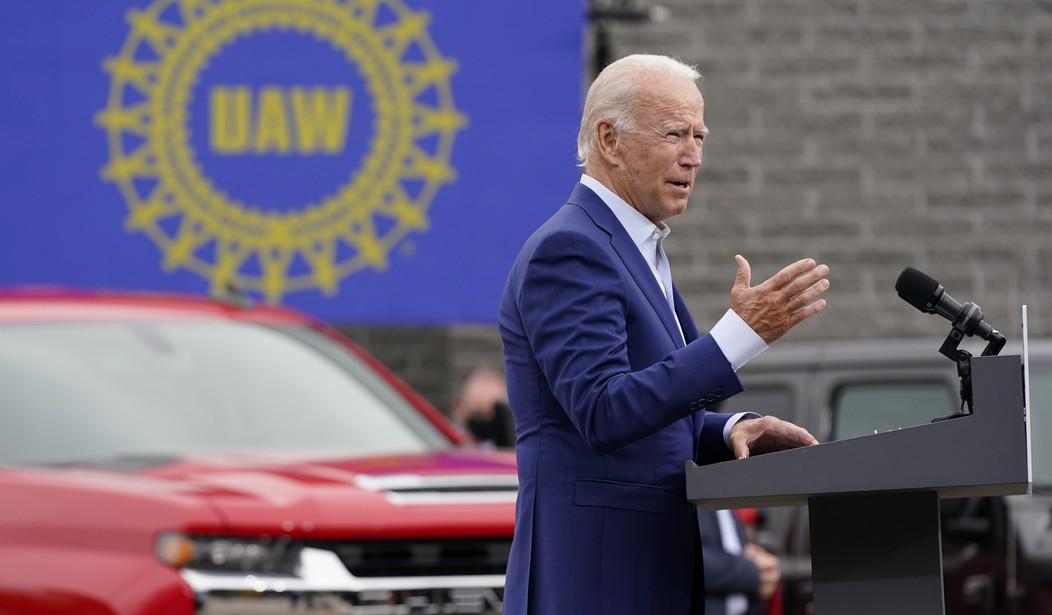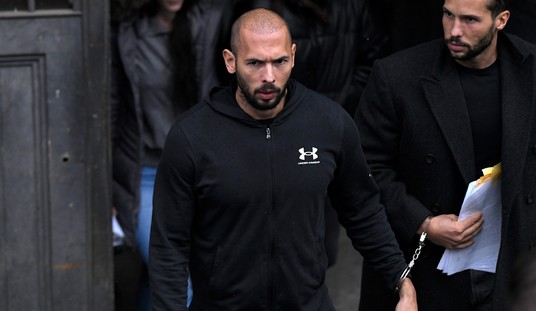And here I thought UPS vs the Teamsters was exciting – WOWSAHS.
The United Autoworkers contract expires on 14 September, and they are gearing up for a walk out, giving auto makers no wiggle room for contract tapdancing. They’ve also change their tactics. Where they used to pick one of the three big guys, and leave the other two hanging while they worked that one deal, not so anymore.
In past negotiating periods, the UAW has selected a lead company of the Big Three and targeted initial collective bargaining efforts, including the threat of striking, there. But the new union leadership, already more aggressive than in recent history, hasn’t promised to limit such efforts to one automaker, leaving all three more vulnerable.
…UAW President Shawn Fain during a Facebook Live event Tuesday reaffirmed that the expirations of the contracts are deadlines, not suggestions. He said the union has no plans to extend the current contracts to allow for bargaining to continue without a strike, which was previously common practice.
And it sure doesn’t sound as if UAW head Shawn Fain is a fan of big union booster Biden, either.
UAW president Shawn Fain says Biden is not doing enough to ensure good wages for workers at electric battery plants
“You have workers at Ultium [G.M.'s battery plant] making $16.50 an hour–less than what you’d get working for Waffle House. It’s criminal”https://t.co/mcC5Nkrtmc
— Steven Greenhouse (@greenhousenyt) August 16, 2023
So…what exactly is the union going to the table with as far as demands go?
• 32-hour workweek
• 46 percent pay raise over 4 years
• Right to strike over plant closures
• Increased retiree benefits
• Defined pension plan for all workers
• Cost of living adjustments
YOWSAHS
That’s probably gonna cost a chunk o’ change, no?
…New contract demands made by the United Auto Workers union would add more than $80 billion to each of the biggest US automakers’ labor costs, according to people familiar with the companies’ estimates.
It would increase hourly labor costs to more than $150 per hour at Ford Motor Co. and General Motors Co., including wages and benefits, up from the $64 an hour GM, Ford and Stellantis NV workers make currently, the people said.
Ooo, I’ll bet someone’s starting to sweat and it’s not the UAW.
UAW President Shawn Fain just read lines from Stellantis's early bargaining proposals and then chucked them in a trash can. pic.twitter.com/lWBfx3UdSd
— Michael Martinez (@MikeMartinez_AN) August 8, 2023
Union boss Fain was on FaceBook Tuesday night with more details for his members and a preview of their action plan. They’ve got a strike authorization vote scheduled for next week.
…Some of the demands of the union include higher pay, cost-of-living adjustments, an increase in benefits for current retirees, and the inclusion of employees who work at electric vehicle manufacturing facilities in the UAW collective bargaining agreement.
The UAW is demanding a 46 percent boost to pay for the union members, which would bring the top union wage to $47.14 an hour from $32.32 an hour. According to ZipRecruiter, the average wage of a UAW member is about $25 an hour.
Mr. Fain has pointed to the compensation of the General Motors chief executive, Mary Barra, who saw a 34 percent compensation increase between 2021 and 2022, with her total pay rising to $29 million, as evidence that the Big Three can afford pay raises.
Mr. Fain has also suggested that the union would fight for a 32-hour work week and demand that the companies guarantee that current members get defined-benefit pensions.
The unions want car makers to keep employees through the transition being forced to EVs, even though EVs are easier to manufacture, and take less employees to do so. Sounds like a recipe for bankruptcy to me, especially considering the Big 3 aren’t doing so well in the EV department already. Ford has 100 days worth of inventory sitting fallow on lots already. They can’t give them away.
Nobody wants the damn things, and even when they do, they sure don’t want theirs. Consumers overwhelmingly want a Tesla, which sells 6 times more EVs than all of the Big 3 combined.
Gonna take some work to catch up, if they can.
…In addition, these automakers are selling EVs at a giant loss. As an example, Ford currently loses about -$30k per Mustang Mach-E manufactured and are likely years away from consistent profitability if sales grow. However, so far this year, Ford is experiencing days-on-hand of inventory 100+ days, significantly above the industry average of 60, signaling poor demand.
Ford recently dropped prices to increase sales, which will likely cause them to lose more money per vehicle, at least in the short term in the hopes sales increase dramatically. We have yet to see if sales actually increased.
However, this equation isn’t just a Ford problem – this applies to all Legacy automakers, including the Big 3.
As EV adoption increases, regardless of how these negotiations end up, the Big 3 will end up with any combination of higher costs, a de-motivated work force, and shut down factories – during the most crucial transition in automotive history.
…In my opinion, it was already unlikely for a majority of Legacy automakers, save a few exceptions, to successfully navigate the transition to EVs given their existing cost structures and performance – again, the Big 3 are running at 6x less sales combined vs their biggest competitor on home soil at giant losses.
Now, the UAW has thrown a wrench that will make it even harder for them to transition. And although it may feel good to think that workers will get paid more and work less if the UAW gets what they want, it will likely end in factories that will shut down forever.
I fear that something drastic needs to happen between now and then for the Big 3 to survive, and thus far, I personally haven’t seen what that drastic thing is.
It takes a lot less time and manpower to put EVs together. No wonder the UAW is trying this “fair transition” tack on top of the eye-watering wage increases.
…The union is concerned about the plans by all three automakers to convert from traditional gasoline powered vehicles to EVs in the coming decades. it takes an estimated one third less hours of work to assemble an EV than a car with an internal combustion engine, since that engine and the transmission that goes with it has so many moving parts missing from an EV.
Fair Transition Hoot of the Day
What a hoot.
Biden crammed down highly inflationary regulations in an ill-advised push for EVs with no appreciation of either the costs or the benefits.
Now it seems that push will cost union jobs, so Biden and the unions want those jobs guaranteed whether they are needed or not.
This is despite the huge costs the auto manufacturers face to be part of this fool’s mission.
A Word About Scaling
No one has ever scaled EVs to estimate the mining costs and infrastructure costs if everyone did the same thing.
Now we have a proposal to pay UAW members $150 an hour for doing nothing because these EVs will require fewer workers.
This is inflationary and environmental madness in every corner, from every angle.
If these guys wind up walking, the verdict is split on what the economic effect would be. The only measurement was the strike against GM years ago, but that was when the union only stuck one automaker at a time. This time it’s all three in the bullseye together.
…GM losses would be $380 million through a 10-day strike, according to AEG. That compares to estimates of $325 million for Ford and $285 million impact on Stellantis.
…However, the strike four years ago was only against one automaker, not all three. A simultaneous strike would likely cause ripple effects more quickly, especially for embattled suppliers that are still attempting to recover from lower production caused by supply chain issues.
*sigh*
Between Bidenomics, interest rates and this crap, I don’t think I’m ever getting that new Jeep.
Better to just keep schweet talking Eleanor, the ’96 Camry…there’s a good girl.
*sigh*







Join the conversation as a VIP Member